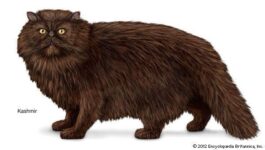
The Most Expensive Cats in the World
The most expensive cat in the world is often considered to be the Ashera or Kashmir cat, which is a highly rare and luxurious breed that can fetch astonishing prices. However, there’s some controversy surrounding the Ashera, as it’s claimed to be a hybrid of several breeds, including the African serval, and some experts argue it’s essentially a highly bred Savannah cat with a different name.

The Most Expensive Cat: The Ashera or Savannah?
- Ashera Cat
Price: Up to $125,000 USD
Description: Marketed as a “luxury” breed, the Ashera is said to be a hybrid of domestic cats, African servals, and Asian leopard cats. It’s known for its large size, exotic appearance, and rare lineage. Due to its rarity and the high cost of breeding, it can command astronomical prices. - Savannah Cat
Price: Can range from $10,000 to over $20,000 USD for high-end, rare-generation hybrids
Description: The Savannah is a hybrid breed between a domestic cat and a serval (a wild African cat). Some of the most exclusive and rare generations of Savannah cats can be very expensive due to their exotic looks and limited availability. The highest-priced Savannahs are often bred for specific traits, making them quite costly.
Why Are These Cats So Expensive?
~Rarity and Breeding Challenges: These cats are rare and require specialized breeding programs.
~Exotic Looks: Their distinctive markings, size, and wild appearance increase their value.
~Demand: Exotic pet enthusiasts are often willing to pay premium prices for unique pets.
A Word of Caution
While these cats can be incredibly expensive, potential owners should be aware that owning such exotic breeds requires significant responsibility, proper care, and often special permits, depending on local laws. Additionally, some breeders may overstate the rarity or pedigree, so always do thorough research and buy from reputable breeders.
In summary, the Ashera is generally considered the most expensive cat in the world, with prices reaching up to $125,000. However, it’s important to approach such purchases with caution and prioritize responsible ownership and ethical breeding practices.
Remember: The most valuable pet is one that brings joy, love, and care—regardless of its price tag!
And speaking of cats, you can order nutritious dry cat food here for your furbabies.
Related
Source: The Most Expensive Cats in the World



